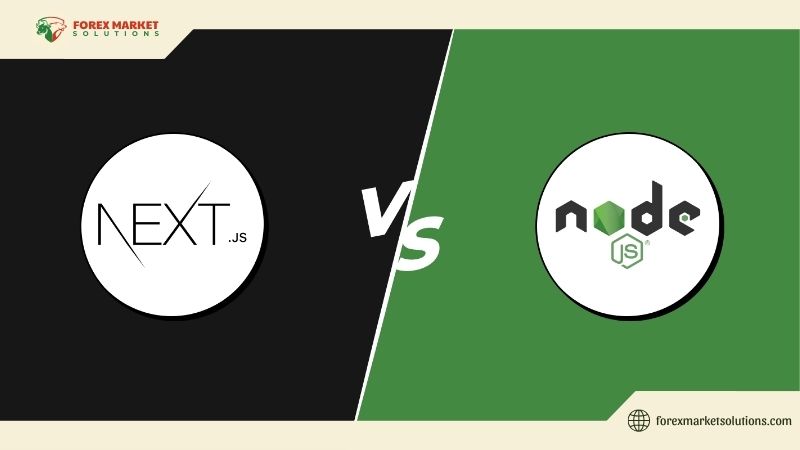The world of Forex trading demands tools that are fast, secure, and reliable, and in 2025, developers are increasingly turning to solutions like iron-session to meet these needs. A common question that arises is: what is the iron-session client side meaning? At its heart, iron-session is a JavaScript library designed for stateless, cookie-based session management, shifting the traditional paradigm of session handling from server-side storage to the client’s browser. This approach offers unique advantages for Forex trading applications, where real-time data and user authentication must coexist seamlessly across a global market that never sleeps. This comprehensive guide explores the iron-session client side meaning, diving into its mechanics, benefits, and practical applications for Forex traders in 2025.

Forex trading platforms thrive on efficiency—executing trades on pairs like EUR/USD or USD/JPY within milliseconds—and security, protecting user funds and data from breaches. The iron-session client side meaning ties directly into this, offering a way to manage user sessions without burdening servers, all while maintaining top-tier encryption. In a year marked by advancements in Next.js, AI-driven trading tools, and heightened cybersecurity concerns, understanding how iron-session operates from the client side empowers developers and traders to leverage its strengths. Whether you’re building a trading dashboard or simply curious about session management, this article unpacks the concept, making it clear and actionable.
What Is Iron-Session?
To grasp the iron-session client side meaning, we first need to define iron-session itself. Developed as a secure session management library for JavaScript, iron-session is widely used in frameworks like Next.js and Node.js. Unlike conventional session systems—where a server stores data linked to a session ID in a database or memory—iron-session encrypts session information, signs it for integrity, and packs it into a cookie. This cookie is then sent to the client’s browser, where it resides until needed for subsequent requests.
From a Forex trading perspective, this is a game-changer. Imagine a trader logging into a platform to monitor USD/CAD. With iron-session, their authentication details—say, a user ID and login status—are sealed into an encrypted cookie. The server doesn’t track this session in a database; instead, it relies on the cookie returned by the client (browser) with each request. The iron-session client side meaning here is that the client holds the session data, not the server, making the system stateless and lightweight—an ideal fit for 2025’s serverless architectures.
This approach leverages the @hapi/iron cryptography library, ensuring the data is tamper-proof. In 2025, as Forex platforms scale globally, this stateless design reduces server overhead, letting developers focus on trading logic rather than session storage.

The Client-Side Perspective
So, what does the iron-session client side meaning entail in practice? From the client’s viewpoint—the trader’s browser—the session data lives in a cookie, typically named something like “iron-session-cookie.” When a trader logs in, the server generates this cookie—say, containing { userId: 123, isLoggedIn: true }—encrypts it with a secret password (at least 32 characters), and sends it to the browser. Each time the trader refreshes their dashboard or places a trade, the browser automatically includes this cookie in the request header.
The server then decrypts and verifies the cookie to authenticate the trader, all without querying a session store. This statelessness is the crux of the iron-session client side meaning—the client carries the session, not the server. In 2025’s Forex world, where milliseconds matter—buying EUR/USD at 1.1020 before a news spike—this eliminates latency from database lookups, enhancing speed. However, the client can’t access or alter this data directly; it’s locked behind encryption, ensuring security even if intercepted.
For Forex developers, this means less server management—deploying on Vercel or AWS Lambda becomes simpler—while traders enjoy uninterrupted access, even across devices, as long as the cookie persists.
Benefits of Iron-Session in Forex Trading
The iron-session client side meaning shines through its advantages, particularly in Forex trading applications. Speed is a standout benefit. Traditional session systems require server-side lookups—fetching a session ID from Redis or PostgreSQL—which adds latency. Iron-session skips this, decrypting the cookie on-the-fly—say, validating a trader’s session to sell USD/JPY at 149.00 in under a millisecond. In 2025, with high-frequency trading on the rise, this edge is invaluable.
Security follows closely. The cookie’s encryption—using AES-256 via @hapi/iron—guards against tampering. A Forex trader’s session—holding sensitive data like account IDs—stays safe, even on public Wi-Fi. The iron-session client side meaning here is that the client holds this fortified data, reducing server vulnerabilities. In 2025, with cyber threats targeting trading platforms, this stateless, encrypted approach aligns with OWASP best practices.
Scalability seals the deal. Without server-side session stores, Forex platforms scale effortlessly—add more nodes, and they handle requests independently, decoding cookies as needed. For a 2025 platform serving thousands of traders across AUD/USD or GBP/USD, this cuts infrastructure costs and complexity.

Implementing Iron-Session in 2025
Using iron-session in a Forex app starts with integration—say, in Next.js, a favorite for 2025’s web developers. Install it via npm (npm i iron-session), then configure it in an API route. For a trader logging in, the server might set a session like this: encrypt { userId: 456, balance: 5000 } into a cookie named “forex-session,” using a password like “32charactersecretkey2025here!!!”. The browser stores this, sending it back with each trade request—say, buying 0.1 lots of EUR/USD at 1.1050.
The server decrypts it using getIronSession from iron-session, verifying the trader’s identity instantly. The iron-session client side meaning in this flow is that the browser acts as the session’s carrier, while the server remains stateless, decoding only what’s needed. In 2025, with Next.js App Router maturing, this fits serverless deployments—run on Edge Functions, and trades execute globally with minimal latency.
Backtesting sessions work too—seal a trader’s settings (strategy ID, timeframe) into the cookie, letting them resume analysis across devices. This flexibility enhances Forex tools in a year of mobile trading growth.
Challenges and Considerations
The iron-session client side meaning isn’t without caveats. Cookie size limits—4,096 bytes per browser—cap data storage. A Forex session with { userId, balance, tradeHistory } might hit 300-500 bytes encrypted, leaving room but requiring lean design. In 2025, with traders expecting rich dashboards, developers must prioritize essential data, avoiding bloat.
Session invalidation poses another hurdle. Since the server doesn’t track sessions, logging out on one device doesn’t kill the cookie elsewhere. Forex platforms might pair iron-session with a database flag—isBlocked—checked on each request, adding a layer to the iron-session client side meaning. In 2025’s security-conscious market, this hybrid mitigates stolen cookie risks.
Encryption overhead exists too—decrypting each request takes CPU cycles. For a 2025 Forex app handling thousands of trades, this is minor, but high-traffic platforms might optimize with Edge caching or lighter data.

Mastering Iron-Session in Forex
The iron-session client side meaning redefines session management for Forex trading in 2025—fast, secure, and stateless, with the client’s browser as the data’s home. From speeding up USD/CAD trades to scaling global platforms, its benefits outweigh its quirks, making it a 2025 staple. Understanding iron-session client side meaning equips developers to craft resilient Forex tools, blending efficiency with safety in a volatile market. Embrace it, and your trading app could lead the pack.
For more Forex tech insights, follow Forex Market Solutions – your guide to winning in 2025 and beyond.
